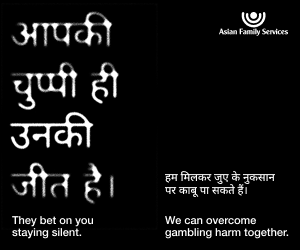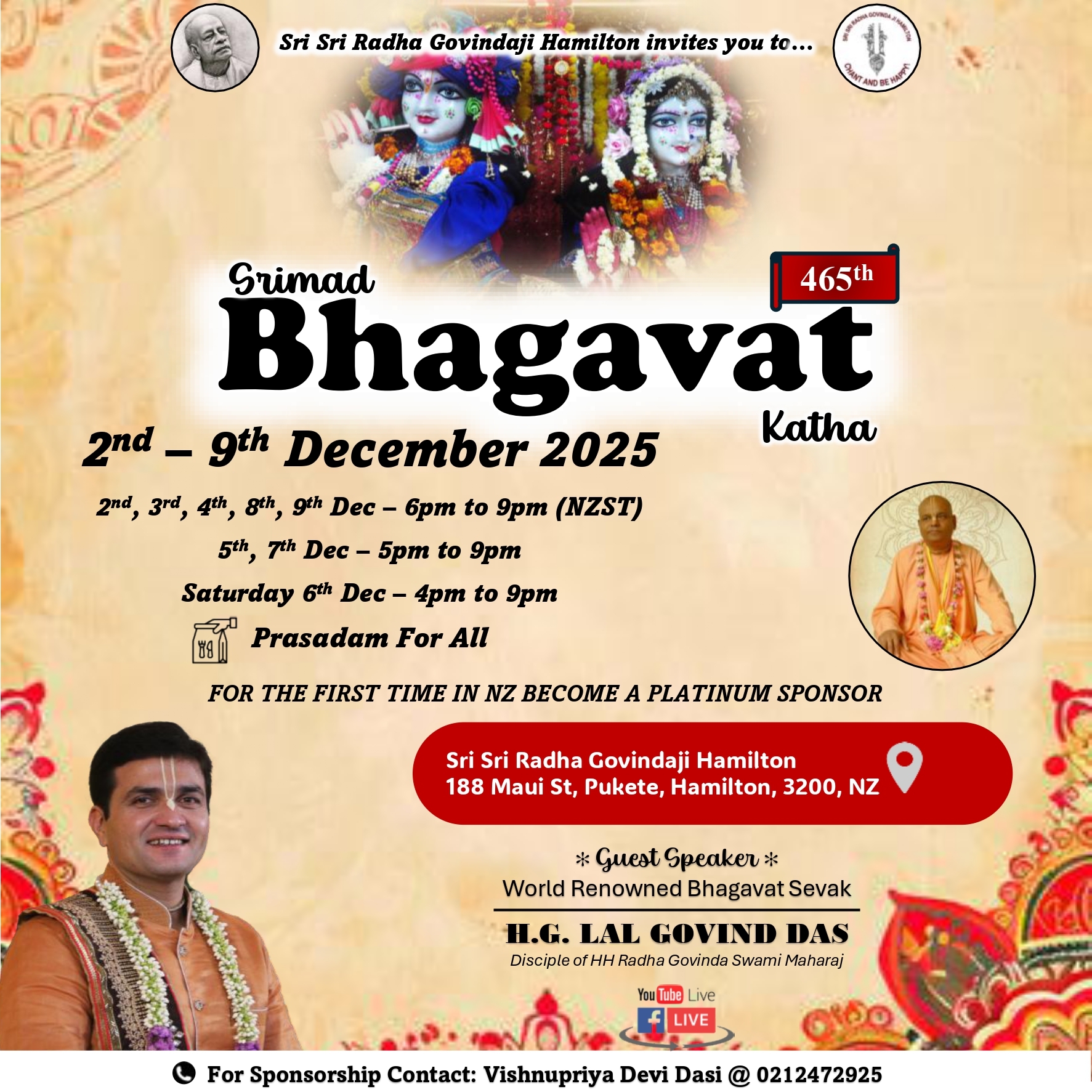The Significance of the Chariot with Krishna and Arjuna
%20(1).jpg?width=740&height=400&name=350%20(1)%20(1).jpg)
August 8 2009
Krishna Janamashtami is observed as the birth day of the 8th Avatar of Lord Vishnu, on the 8th day of the dark half Hindu month of Shraavana, normally falls between mid August and mid September, when the Moon is in Rohini Nakshatra. Krishna is famous for many things, one of the most well known is Bhagavad Gita, which is the conversation between Krishna and Arjuna before the great Battle of Kurukshetra and is considered as a philosophical and literary classic of all times.
Look at the Geeta Upadesam picture. There is a chariot in the battle field of Kurukshetra. Arjuna as a passenger is seated at back. The chariot is driven by a charioteer (driver) Lord Krishna. HE is holding the reins. There are horses leading the chariot. There are reins controlling the horses. Collectively this composes one full picture of the chariot. But where was this chariot taken? It was taken right into the midst of two fighting armies. If Arjuna was going to war, why was Krishna holding the reins? What does this signify?
Just reciting Bhagavad Gita is not enough unless we understand the inner meaning of it. Gita teaches us in a simple and easy way by this picture. By proper inner enquiry, we can understand the fullness of this picture which signifies everything that is contained in life.
The picture is symbolic of our inner instruments to train the mind and senses. This is a very concise and beautiful description, symbolic and full of meaning and profundity.
The chariot is the Sarira (body). The passenger Arjuna is the Jivi (embodied individual soul). The charioteer Krishna is the Atma (Self, sometimes referred as Higher Intellect or Buddhi) leading the chariot into the middle of two armies of Kauravas (Demonic nature) and Pandavas (Divine nature) in the battlefield of Kurukshetra (Inner Battle of Mind). The reins are the operations of the Manas (Mind). The horses are the Indriyas (senses, such as, eyes, ears, nose, tongue, etc.) The roads along which this chariot is driven are the objects of the senses. All this is made possible by a joint activity of the Atma/Higher Intellect, the Senses and the Mind.
You may forget the historical battle of Mahabharata, but don’t forget the message contained in it. In fact, the battle is still going on every day within us; this is the fight between our demonic and divine qualities. There has always been a struggle between the two. In this conflict between opposing forces, Krishna (Self, Atma, Higher Intellect) is ever on the side of Dharma (Righteousness) - the reality which sustains, not the delusion which undermines. If you seek to have the Lord on your side as your guide, equip yourself with the divine nature, the qualities of Dharma. For the Lord is where Dharma is. This chariot is to be driven right to the Destination which is Perfection, Self Realization. Horses may dash down the chariot into a ditch if they are restive, tired, unwilling, and cannot see the road properly.
The Bhagavad Gita is the story of invoking and trusting Divine Guidance in order to gain Peace and Enlightenment. And, although we must fight this battle alone, we are not truly alone. We have Divine Guidance, our personal Charioteer, our Krishna, and our Atman assisting us throughout every battle we must fight with each of our Inner Demons.
Learn how to drive your chariot
1. Chariot: Sarira (physical body), the instrument through which the Self, intellect, mind, and senses operate.
2. Charioteer: Atma (Self, Higher Intellect or Buddhi), is supposed to be the wise giver of instructions to the mind.
3. Passenger: Jivi (Individual Soul, the embodied Atma, the pure centre of consciousness), is always the neutral witness.
4. Horses: Indriyas (Senses, such as eyes-vision, ears-hearing, nose-smell, tongue-taste, skin-touch), through which we relate to the external world by perception and action.
5. Reins: Manas (Mind), through which the senses receive their instructions to act and perceive.
6. Roads: The countless objects of senses and desires in the world and our memory
7. Wheels of the Chariot: Right effort
8. Destination: “Perfection” or “Self Realization”
9. Kurukshetra Battlefield: It’s the inner battlefield, the only place where one can confront, do battle with, and vanquish the Inner Demons.
10. Two Armies: Kauravas (Demonic nature) and Pandavas (Divine nature)
11. Who's driving your chariot? Mostly we don’t let the charioteer on duty. The reins (mind) are flapping around freely without the proper inner guidance and not giving instruction to the horses (senses). Hence they wander freely down any road they feel like in response to their past memories (Chitta). The chariot (body) takes a beating, the horses (senses) get tired, the reins (mind)) get worn, and the charioteer (Intelligence) gets lazy. The passenger is completely ignored.
12. Put the charioteer back on the job: The solution to the problem is to retrain the charioteer (Intelligence) to pick up the reins (mind) and start giving some direction to the horses (senses). This training is called sadhana (spiritual practice). It means training all of the levels of ourselves so that we might experience the still, silent, eternal center.
13. Allow the charioteer to serve the passenger: As the charioteer (Intelligence) becomes more stabilized in being back on the job, there is an ever increasing awareness of the fact the entire purpose of the chariot, horses, reins, and charioteer, are to serve as instruments for the passenger, the true Self.
“Don’t drive the car with your foot on the brake, but use the brakes to control the car when necessary. Must exercise control when there is some danger, such as impure thoughts, impure feelings, impure sights, impure hearing. If you don’t have any brakes at all you will surely come to grief. Horses which cannot be brought under control without reins, a car without brakes, a person without sense control, are all extremely dangerous and heading for disaster.”
--
Source: The Teachings of Sri Sathya Sai Baba
Look at the Geeta Upadesam picture. There is a chariot in the battle field of Kurukshetra. Arjuna as a passenger is seated at back. The chariot is driven by a charioteer (driver) Lord Krishna. HE is holding the reins. There are horses leading the chariot. There are reins controlling the horses. Collectively this composes one full picture of the chariot. But where was this chariot taken? It was taken right into the midst of two fighting armies. If Arjuna was going to war, why was Krishna holding the reins? What does this signify?
Just reciting Bhagavad Gita is not enough unless we understand the inner meaning of it. Gita teaches us in a simple and easy way by this picture. By proper inner enquiry, we can understand the fullness of this picture which signifies everything that is contained in life.
The picture is symbolic of our inner instruments to train the mind and senses. This is a very concise and beautiful description, symbolic and full of meaning and profundity.
The chariot is the Sarira (body). The passenger Arjuna is the Jivi (embodied individual soul). The charioteer Krishna is the Atma (Self, sometimes referred as Higher Intellect or Buddhi) leading the chariot into the middle of two armies of Kauravas (Demonic nature) and Pandavas (Divine nature) in the battlefield of Kurukshetra (Inner Battle of Mind). The reins are the operations of the Manas (Mind). The horses are the Indriyas (senses, such as, eyes, ears, nose, tongue, etc.) The roads along which this chariot is driven are the objects of the senses. All this is made possible by a joint activity of the Atma/Higher Intellect, the Senses and the Mind.
You may forget the historical battle of Mahabharata, but don’t forget the message contained in it. In fact, the battle is still going on every day within us; this is the fight between our demonic and divine qualities. There has always been a struggle between the two. In this conflict between opposing forces, Krishna (Self, Atma, Higher Intellect) is ever on the side of Dharma (Righteousness) - the reality which sustains, not the delusion which undermines. If you seek to have the Lord on your side as your guide, equip yourself with the divine nature, the qualities of Dharma. For the Lord is where Dharma is. This chariot is to be driven right to the Destination which is Perfection, Self Realization. Horses may dash down the chariot into a ditch if they are restive, tired, unwilling, and cannot see the road properly.
The Bhagavad Gita is the story of invoking and trusting Divine Guidance in order to gain Peace and Enlightenment. And, although we must fight this battle alone, we are not truly alone. We have Divine Guidance, our personal Charioteer, our Krishna, and our Atman assisting us throughout every battle we must fight with each of our Inner Demons.
Learn how to drive your chariot
1. Chariot: Sarira (physical body), the instrument through which the Self, intellect, mind, and senses operate.
2. Charioteer: Atma (Self, Higher Intellect or Buddhi), is supposed to be the wise giver of instructions to the mind.
3. Passenger: Jivi (Individual Soul, the embodied Atma, the pure centre of consciousness), is always the neutral witness.
4. Horses: Indriyas (Senses, such as eyes-vision, ears-hearing, nose-smell, tongue-taste, skin-touch), through which we relate to the external world by perception and action.
5. Reins: Manas (Mind), through which the senses receive their instructions to act and perceive.
6. Roads: The countless objects of senses and desires in the world and our memory
7. Wheels of the Chariot: Right effort
8. Destination: “Perfection” or “Self Realization”
9. Kurukshetra Battlefield: It’s the inner battlefield, the only place where one can confront, do battle with, and vanquish the Inner Demons.
10. Two Armies: Kauravas (Demonic nature) and Pandavas (Divine nature)
11. Who's driving your chariot? Mostly we don’t let the charioteer on duty. The reins (mind) are flapping around freely without the proper inner guidance and not giving instruction to the horses (senses). Hence they wander freely down any road they feel like in response to their past memories (Chitta). The chariot (body) takes a beating, the horses (senses) get tired, the reins (mind)) get worn, and the charioteer (Intelligence) gets lazy. The passenger is completely ignored.
12. Put the charioteer back on the job: The solution to the problem is to retrain the charioteer (Intelligence) to pick up the reins (mind) and start giving some direction to the horses (senses). This training is called sadhana (spiritual practice). It means training all of the levels of ourselves so that we might experience the still, silent, eternal center.
13. Allow the charioteer to serve the passenger: As the charioteer (Intelligence) becomes more stabilized in being back on the job, there is an ever increasing awareness of the fact the entire purpose of the chariot, horses, reins, and charioteer, are to serve as instruments for the passenger, the true Self.
“Don’t drive the car with your foot on the brake, but use the brakes to control the car when necessary. Must exercise control when there is some danger, such as impure thoughts, impure feelings, impure sights, impure hearing. If you don’t have any brakes at all you will surely come to grief. Horses which cannot be brought under control without reins, a car without brakes, a person without sense control, are all extremely dangerous and heading for disaster.”
--
Source: The Teachings of Sri Sathya Sai Baba
Krishna Janamashtami is observed as the birth day of the 8th Avatar of Lord Vishnu, on the 8th day of the dark half Hindu month of Shraavana, normally falls between mid August and mid September, when the Moon is in Rohini Nakshatra. Krishna is famous for many things, one of the most well known is...
Krishna Janamashtami is observed as the birth day of the 8th Avatar of Lord Vishnu, on the 8th day of the dark half Hindu month of Shraavana, normally falls between mid August and mid September, when the Moon is in Rohini Nakshatra. Krishna is famous for many things, one of the most well known is Bhagavad Gita, which is the conversation between Krishna and Arjuna before the great Battle of Kurukshetra and is considered as a philosophical and literary classic of all times.
Look at the Geeta Upadesam picture. There is a chariot in the battle field of Kurukshetra. Arjuna as a passenger is seated at back. The chariot is driven by a charioteer (driver) Lord Krishna. HE is holding the reins. There are horses leading the chariot. There are reins controlling the horses. Collectively this composes one full picture of the chariot. But where was this chariot taken? It was taken right into the midst of two fighting armies. If Arjuna was going to war, why was Krishna holding the reins? What does this signify?
Just reciting Bhagavad Gita is not enough unless we understand the inner meaning of it. Gita teaches us in a simple and easy way by this picture. By proper inner enquiry, we can understand the fullness of this picture which signifies everything that is contained in life.
The picture is symbolic of our inner instruments to train the mind and senses. This is a very concise and beautiful description, symbolic and full of meaning and profundity.
The chariot is the Sarira (body). The passenger Arjuna is the Jivi (embodied individual soul). The charioteer Krishna is the Atma (Self, sometimes referred as Higher Intellect or Buddhi) leading the chariot into the middle of two armies of Kauravas (Demonic nature) and Pandavas (Divine nature) in the battlefield of Kurukshetra (Inner Battle of Mind). The reins are the operations of the Manas (Mind). The horses are the Indriyas (senses, such as, eyes, ears, nose, tongue, etc.) The roads along which this chariot is driven are the objects of the senses. All this is made possible by a joint activity of the Atma/Higher Intellect, the Senses and the Mind.
You may forget the historical battle of Mahabharata, but don’t forget the message contained in it. In fact, the battle is still going on every day within us; this is the fight between our demonic and divine qualities. There has always been a struggle between the two. In this conflict between opposing forces, Krishna (Self, Atma, Higher Intellect) is ever on the side of Dharma (Righteousness) - the reality which sustains, not the delusion which undermines. If you seek to have the Lord on your side as your guide, equip yourself with the divine nature, the qualities of Dharma. For the Lord is where Dharma is. This chariot is to be driven right to the Destination which is Perfection, Self Realization. Horses may dash down the chariot into a ditch if they are restive, tired, unwilling, and cannot see the road properly.
The Bhagavad Gita is the story of invoking and trusting Divine Guidance in order to gain Peace and Enlightenment. And, although we must fight this battle alone, we are not truly alone. We have Divine Guidance, our personal Charioteer, our Krishna, and our Atman assisting us throughout every battle we must fight with each of our Inner Demons.
Learn how to drive your chariot
1. Chariot: Sarira (physical body), the instrument through which the Self, intellect, mind, and senses operate.
2. Charioteer: Atma (Self, Higher Intellect or Buddhi), is supposed to be the wise giver of instructions to the mind.
3. Passenger: Jivi (Individual Soul, the embodied Atma, the pure centre of consciousness), is always the neutral witness.
4. Horses: Indriyas (Senses, such as eyes-vision, ears-hearing, nose-smell, tongue-taste, skin-touch), through which we relate to the external world by perception and action.
5. Reins: Manas (Mind), through which the senses receive their instructions to act and perceive.
6. Roads: The countless objects of senses and desires in the world and our memory
7. Wheels of the Chariot: Right effort
8. Destination: “Perfection” or “Self Realization”
9. Kurukshetra Battlefield: It’s the inner battlefield, the only place where one can confront, do battle with, and vanquish the Inner Demons.
10. Two Armies: Kauravas (Demonic nature) and Pandavas (Divine nature)
11. Who's driving your chariot? Mostly we don’t let the charioteer on duty. The reins (mind) are flapping around freely without the proper inner guidance and not giving instruction to the horses (senses). Hence they wander freely down any road they feel like in response to their past memories (Chitta). The chariot (body) takes a beating, the horses (senses) get tired, the reins (mind)) get worn, and the charioteer (Intelligence) gets lazy. The passenger is completely ignored.
12. Put the charioteer back on the job: The solution to the problem is to retrain the charioteer (Intelligence) to pick up the reins (mind) and start giving some direction to the horses (senses). This training is called sadhana (spiritual practice). It means training all of the levels of ourselves so that we might experience the still, silent, eternal center.
13. Allow the charioteer to serve the passenger: As the charioteer (Intelligence) becomes more stabilized in being back on the job, there is an ever increasing awareness of the fact the entire purpose of the chariot, horses, reins, and charioteer, are to serve as instruments for the passenger, the true Self.
“Don’t drive the car with your foot on the brake, but use the brakes to control the car when necessary. Must exercise control when there is some danger, such as impure thoughts, impure feelings, impure sights, impure hearing. If you don’t have any brakes at all you will surely come to grief. Horses which cannot be brought under control without reins, a car without brakes, a person without sense control, are all extremely dangerous and heading for disaster.”
--
Source: The Teachings of Sri Sathya Sai Baba
Look at the Geeta Upadesam picture. There is a chariot in the battle field of Kurukshetra. Arjuna as a passenger is seated at back. The chariot is driven by a charioteer (driver) Lord Krishna. HE is holding the reins. There are horses leading the chariot. There are reins controlling the horses. Collectively this composes one full picture of the chariot. But where was this chariot taken? It was taken right into the midst of two fighting armies. If Arjuna was going to war, why was Krishna holding the reins? What does this signify?
Just reciting Bhagavad Gita is not enough unless we understand the inner meaning of it. Gita teaches us in a simple and easy way by this picture. By proper inner enquiry, we can understand the fullness of this picture which signifies everything that is contained in life.
The picture is symbolic of our inner instruments to train the mind and senses. This is a very concise and beautiful description, symbolic and full of meaning and profundity.
The chariot is the Sarira (body). The passenger Arjuna is the Jivi (embodied individual soul). The charioteer Krishna is the Atma (Self, sometimes referred as Higher Intellect or Buddhi) leading the chariot into the middle of two armies of Kauravas (Demonic nature) and Pandavas (Divine nature) in the battlefield of Kurukshetra (Inner Battle of Mind). The reins are the operations of the Manas (Mind). The horses are the Indriyas (senses, such as, eyes, ears, nose, tongue, etc.) The roads along which this chariot is driven are the objects of the senses. All this is made possible by a joint activity of the Atma/Higher Intellect, the Senses and the Mind.
You may forget the historical battle of Mahabharata, but don’t forget the message contained in it. In fact, the battle is still going on every day within us; this is the fight between our demonic and divine qualities. There has always been a struggle between the two. In this conflict between opposing forces, Krishna (Self, Atma, Higher Intellect) is ever on the side of Dharma (Righteousness) - the reality which sustains, not the delusion which undermines. If you seek to have the Lord on your side as your guide, equip yourself with the divine nature, the qualities of Dharma. For the Lord is where Dharma is. This chariot is to be driven right to the Destination which is Perfection, Self Realization. Horses may dash down the chariot into a ditch if they are restive, tired, unwilling, and cannot see the road properly.
The Bhagavad Gita is the story of invoking and trusting Divine Guidance in order to gain Peace and Enlightenment. And, although we must fight this battle alone, we are not truly alone. We have Divine Guidance, our personal Charioteer, our Krishna, and our Atman assisting us throughout every battle we must fight with each of our Inner Demons.
Learn how to drive your chariot
1. Chariot: Sarira (physical body), the instrument through which the Self, intellect, mind, and senses operate.
2. Charioteer: Atma (Self, Higher Intellect or Buddhi), is supposed to be the wise giver of instructions to the mind.
3. Passenger: Jivi (Individual Soul, the embodied Atma, the pure centre of consciousness), is always the neutral witness.
4. Horses: Indriyas (Senses, such as eyes-vision, ears-hearing, nose-smell, tongue-taste, skin-touch), through which we relate to the external world by perception and action.
5. Reins: Manas (Mind), through which the senses receive their instructions to act and perceive.
6. Roads: The countless objects of senses and desires in the world and our memory
7. Wheels of the Chariot: Right effort
8. Destination: “Perfection” or “Self Realization”
9. Kurukshetra Battlefield: It’s the inner battlefield, the only place where one can confront, do battle with, and vanquish the Inner Demons.
10. Two Armies: Kauravas (Demonic nature) and Pandavas (Divine nature)
11. Who's driving your chariot? Mostly we don’t let the charioteer on duty. The reins (mind) are flapping around freely without the proper inner guidance and not giving instruction to the horses (senses). Hence they wander freely down any road they feel like in response to their past memories (Chitta). The chariot (body) takes a beating, the horses (senses) get tired, the reins (mind)) get worn, and the charioteer (Intelligence) gets lazy. The passenger is completely ignored.
12. Put the charioteer back on the job: The solution to the problem is to retrain the charioteer (Intelligence) to pick up the reins (mind) and start giving some direction to the horses (senses). This training is called sadhana (spiritual practice). It means training all of the levels of ourselves so that we might experience the still, silent, eternal center.
13. Allow the charioteer to serve the passenger: As the charioteer (Intelligence) becomes more stabilized in being back on the job, there is an ever increasing awareness of the fact the entire purpose of the chariot, horses, reins, and charioteer, are to serve as instruments for the passenger, the true Self.
“Don’t drive the car with your foot on the brake, but use the brakes to control the car when necessary. Must exercise control when there is some danger, such as impure thoughts, impure feelings, impure sights, impure hearing. If you don’t have any brakes at all you will surely come to grief. Horses which cannot be brought under control without reins, a car without brakes, a person without sense control, are all extremely dangerous and heading for disaster.”
--
Source: The Teachings of Sri Sathya Sai Baba









Leave a Comment